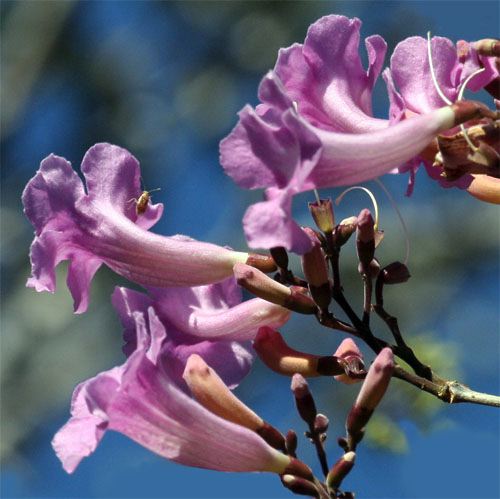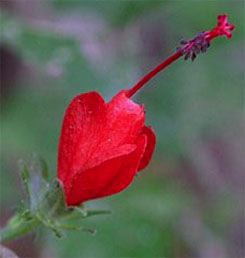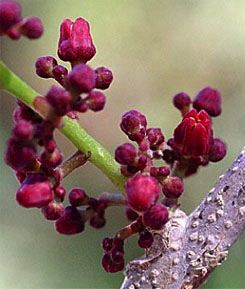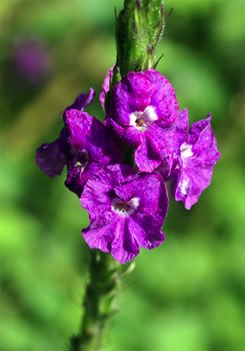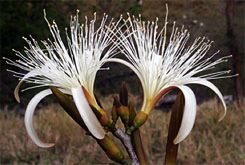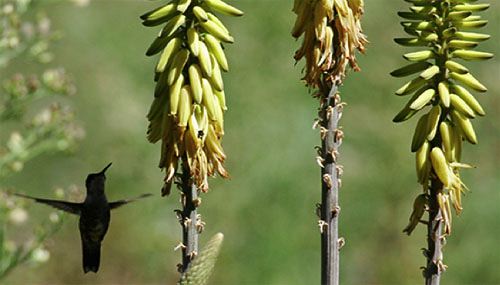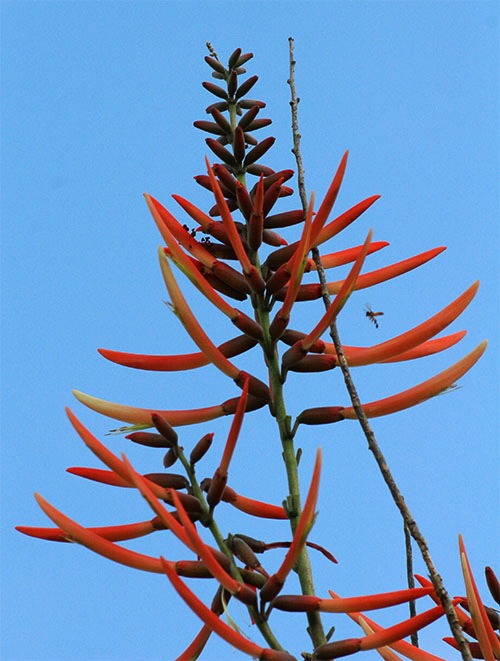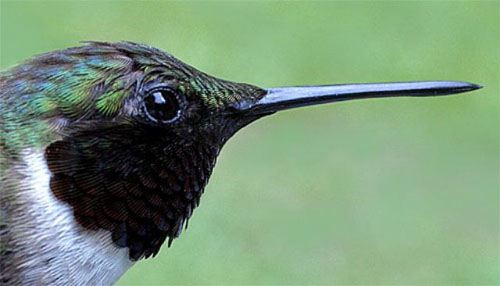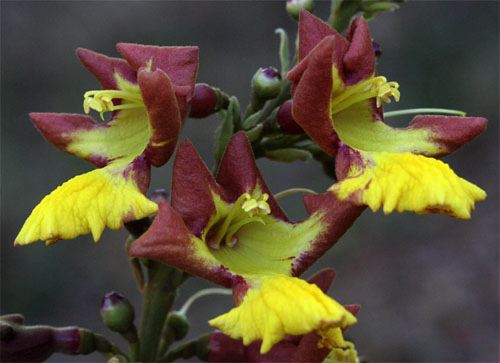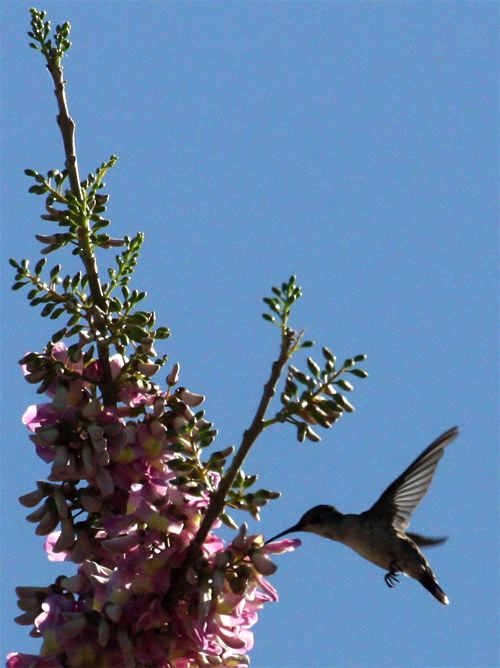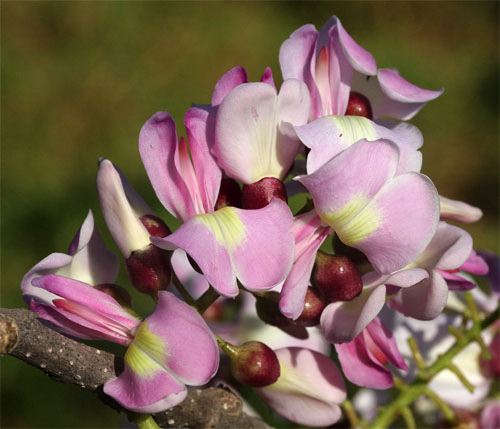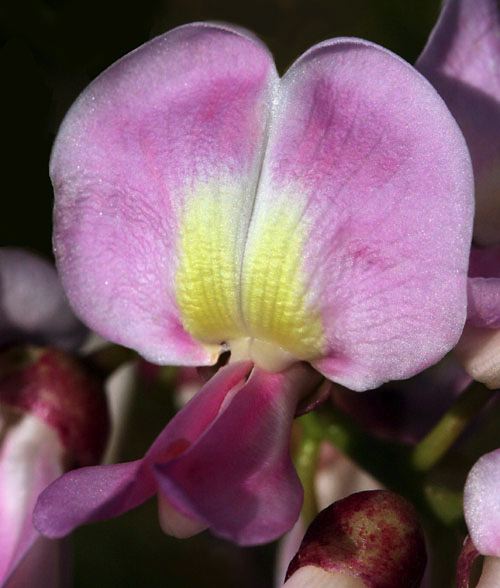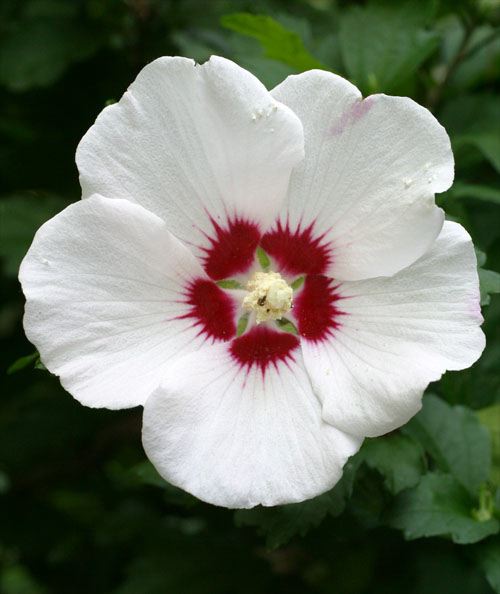|
|
|||
|
(Back to Preceding Week; on to Next Week) |
|
RUBY-THROATED HUMMINGBIRDS: When people ponder pollination, they usually think about Honey Bees--those ubiquitous social insects that collect nectar, spread pollen, and make delectable sweet liquid that gives them their name. Indeed, Honey Bees have become critically important as pollinators for a multitude of native plants and agricultural crops. Most folks don't realize Honey Bees, Apis mellifera, aren't even native to the Western Hemisphere but were brought over by early settlers to provide honey. In centuries since, our native North American pollinators--including birds and bats, flies and beetles, wasps and bees, and butterflies and moths, among others--have been in decline due in part to pesticide abuse. One animal that seems to be doing well, however, is the Ruby-throated Hummingbird, a species oft-forgotten when the topic of pollination comes up.
All text & photos © Hilton Pond Center Without pollinators, nature AND humans would be in big trouble. Except for the relatively few self-fertilizing plants or those that are wind-pollinated, vast numbers of flora depend on animal agents to carry pollen from one flower to the next. And many of those plants produce foodstuffs consumed by humans; in fact, as the North American Pollinator Protection Campaign (NAPPC) likes to point out, one of every three bites of food you ate today came through the work of pollinators. To our knowledge Ruby-throated Hummingbirds (RTHU) don't pollinate any crops of agricultural importance, but they apparently do serve as pollinators for numerous herbaceous and woody plants. In the eastern U.S. and southern Canada where RTHU breed, they're closely associated with a variety of spring-, summer-, and autumn-blooming plants such as those shown in the grouping below.
Even a cursory look at the seven flowers above reveals all are more or less tubular--exactly what you might expect from a plant adapted to borrowing the hummingbird's long, tapered bill as a tool for pollination. Not coincidentally, all blossoms are also some shade of red--a color that stands out sharply against green vegetation that predominates the natural landscape; it's not that hummers are particularly attracted to red, it's just that they can find red flowers more easily, and many of those red flowers are nectar-rich.
All text & photos © Hilton Pond Center Added to the above group is an eighth plant we believe to be single most important native hummingbird flower in eastern North America--Trumpet Creeper, Campsis radicans (photos just above, below right, and at top of page).
All text & photos © Hilton Pond Center As we have observed during our ten expeditions to Costa Rica, the Trumpet Creeper vine--a member of the Catalpa Family (Bignoniaceae)--has several relatives in the Neotropics that also bear tubular flowers, but they're anything but bright red in color. One (above) is close with purplish-pink blossoms, while the other (below) is a very different, very deep yellow.
All text & photos © Hilton Pond Center Despite not being red, these two tropical members of the Bignoniaceae make copious nectar and we've observed Ruby-throated Hummingbirds visiting both on the hummers' wintering grounds in Guanacaste Province on Costa Rica's Pacific coast. (NOTE: If you know the species names for these two vines or any other flowers not identified on this page, please send the info to RESEARCH.)
Several other Costa Rican flowers at which we've observed ruby-throats nectaring are grouped above. Some such as Lantana and Turk's Cap are red or reddish and even tubular, but others like Inga and Pochote are white and feathery. And then there's the yellow, tubular, non-native Aloe Vera (just above) that was imported from Africa and turns out to be a true hummingbird magnet in Guanacaste. So what's going on here? Why in the Neotropics don't we see Ruby-throated Hummingbirds primarily visiting red, tube-shaped flowers as they do on the breeding grounds in North America?
All text & photos © Hilton Pond Center It's not that there aren't any tubular red flowers in Costa Rica; in fact, there are plenty. These include several species of Erythrina, for example, but the one pictured above is mostly inaccessible to Ruby-throated Hummingbirds because its three-inch recurved corolla is too long and narrow for their bills.
All text & photos © Hilton Pond Center This long-flowered red Erythrina is visited instead by the Plain-capped Starthroat (above), whose head is about the same size as that of a male ruby-throat (below) but whose two-inch bill is more than twice the length of a ruby-throat's. The starthroat needs to stick out its tongue less than an inch to reach nectar at the end of the Erythrina tube--a feat the RTHU cannot duplicate.
All text & photos © Hilton Pond Center Instead of wasting time on fruitless efforts to probe blossoms of Erythrina--especially when the larger, better-adapted Plain-capped Starthroat defends the tree and chases them away--Ruby-throated Hummingbirds seek out flowers with nectar that can be lapped more easily. Some floral sources are neither red nor tubular.
All text & photos © Hilton Pond Center One non-native tree that ruby-throats flock to in Guanacaste in mid-February is Gmelina arborea (above), imported from India and planted as a timber source in Central America. During its three-week dry season bloom period, each mature tree produces tens of thousands of two-inch flowers containing nectar attractive to orioles and hummingbirds alike. Granted, these blossoms are purplish-yellow (i.e., almost red-like), but it would be a stretch to call them tubular.
All text & photos © Hilton Pond Center Another tree--this time a native--frequented by Ruby-throated Hummingbirds during our 2010 expedition to Costa Rica was Madero Negro, Gliricidia sepium (above). Giant members of the Pea Family (Fabaceae, AKA Leguminosae), Madero Negro trees towered over Aloe Vera fields at the former Carrington plant south of Liberia and drew in quite a few ruby-throats, including the female above.
All text & photos © Hilton Pond Center Madero Negro flowers occur in dense clusters (above and below) at the ends of branches during February, about halfway through Guanacaste's dry season. We observed at least three hummingbird species visiting Madero Negro, with Ruby-throated Hummingbirds frequently showing territoriality in defending a tree and its blossoms against their own conspecifics.
All text & photos © Hilton Pond Center This is all of interest, but we still haven't answered the question of how it is the red-tubular-flower-ruby-throated-hummingbird relationship prevalent within this bird's North American breeding range doesn't seem to be replicated on RTHU wintering grounds in Costa Rica. We speculate it may be heavy competition from at least some of the ten other non-migratory hummingbird species on our Guanacaste study sites that drives wintering ruby-throats to be much more opportunistic and generalistic in their feeding habits.
Although RTHU probably did evolve with red tubular flowers as their primary carbohydrate sources in eastern North America, "up here" they also feed from other blossoms during the breeding season. Hummingbirds are innately curious, and if a ruby-throat sticks its bill into a flower of any shape or color and gets a nectar reward, chances are it will continue to visit similar sources. That's why such non-natives as sages (Salvia spp.) with blue flowers and Rose-of-Sharon (above) with its big, flat, white inflorescence attract RTHU in droves when such blossoms are available. (And why else would a hummer go repeatedly to a glass and plastic feeder unless it got a sugar fix each time?) Although there's little question Ruby-throated Hummingbirds are North American pollinators of tubular flowers such as Trumpet Creeper, whether they serve in transferring pollen for flora in the Neotropics is another question. It may be that for some flowers RTHU--present in Costa Rica for half the year--play a pollination role equal to or even greater than non-migrant resident hummers; after all, many plants in western Costa Rica bloom only during the dry season when ruby-throats are present and--based on our six winters of observations--may actually be the most common Guanacaste hummingbird species January through February. The relative importance of migratory Ruby-throated Hummingbirds as pollinators of native Neotropical plants is a subject that's wide-open for investigation by our Operation RubyThroat teams on future expeditions. Care to join us in 2011 in Costa Rica--or Nicaragua or Guatemala or Belize--to further investigate this vital ecological concept? All text photos © Hilton Pond Center OTHER "NEW" FLOWERS VISITED-- Flowers below were first observed in 2009 or 2010 being visited by RTHU in Costa Rica. For an earlier discussion of plants at which we have seen RTHU nectaring during our other Neotropical hummingbird expeditions, please see (NOTE: If you know the species names for any plants not All text photos © Hilton Pond Center | ||||||||||||||||||

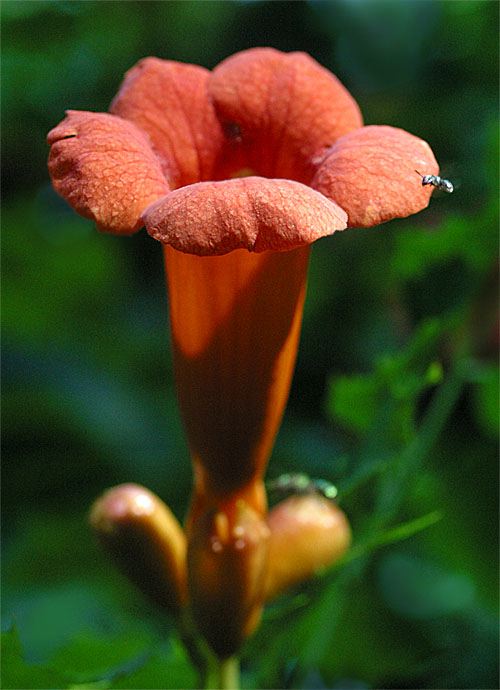
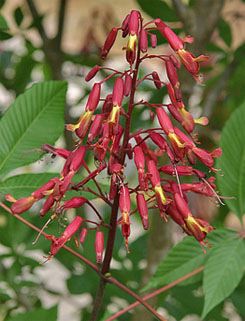
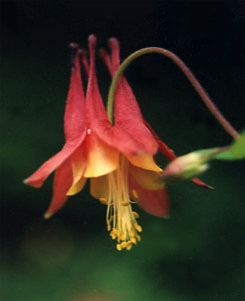

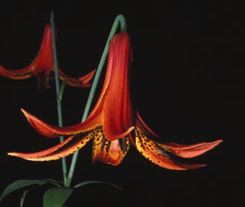
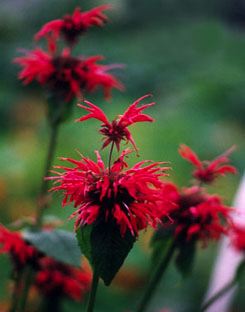
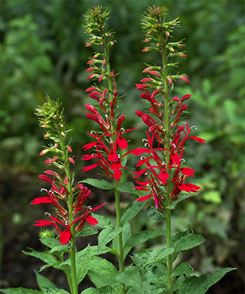
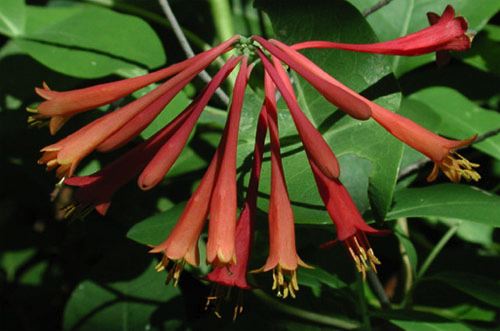

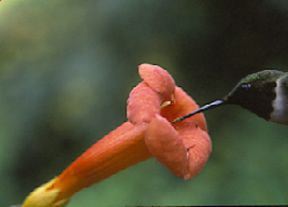 This four-inch tubular red-orange blossom carries a heavy nectar load and grows almost everywhere Ruby-throated Hummingbirds breed in the eastern U.S. Trumpet Creeper begins blooming in late spring just when young RTHU hatch, and the flowers continue until early September when fledgling and adult ruby-throats start heading south for the winter. This finely tuned bird/flower relationship is an undeniable example of co-adaptation.
This four-inch tubular red-orange blossom carries a heavy nectar load and grows almost everywhere Ruby-throated Hummingbirds breed in the eastern U.S. Trumpet Creeper begins blooming in late spring just when young RTHU hatch, and the flowers continue until early September when fledgling and adult ruby-throats start heading south for the winter. This finely tuned bird/flower relationship is an undeniable example of co-adaptation.